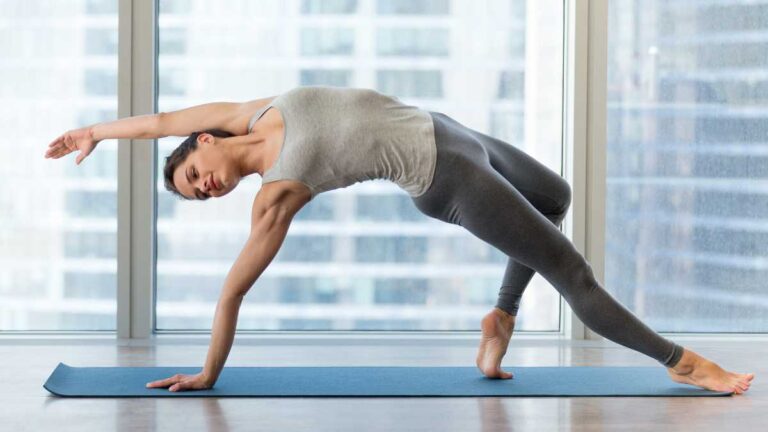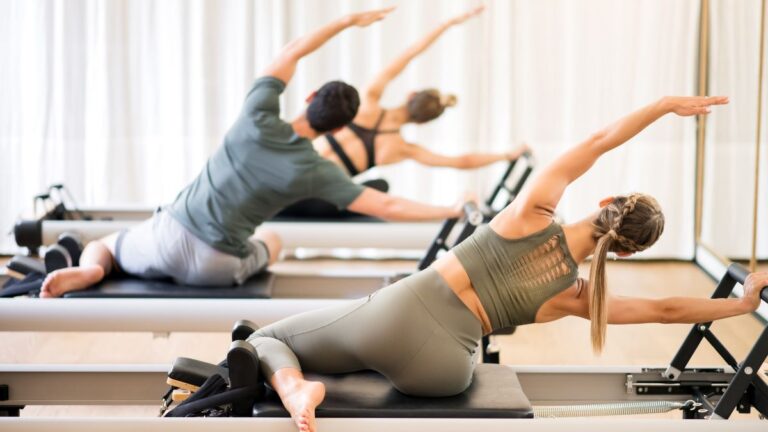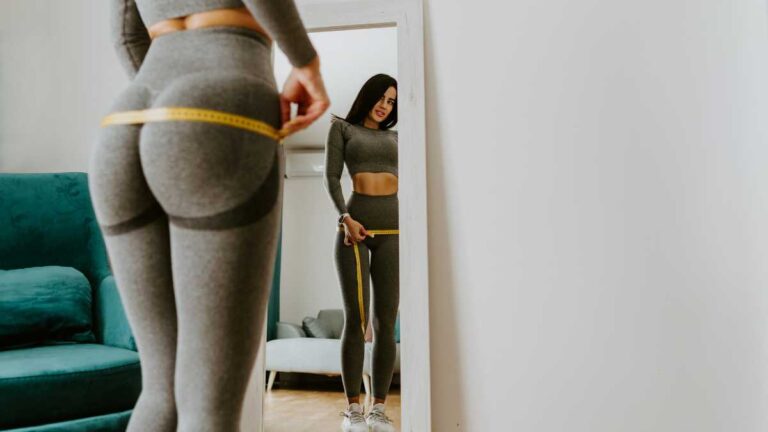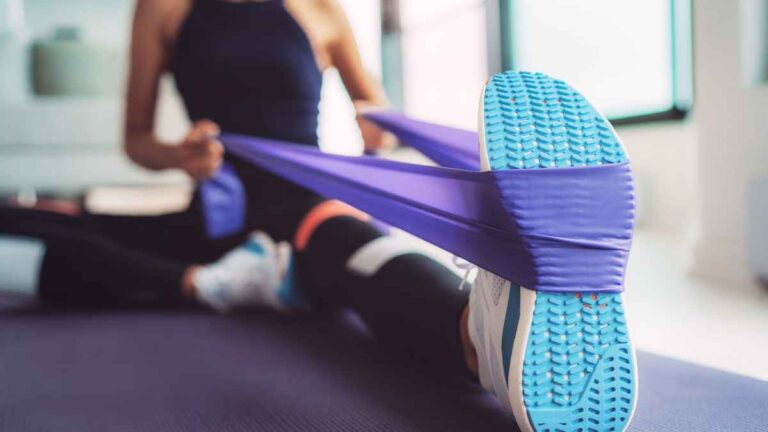Pilates For Flexibility – Move Freely Without Feeling Like A Wall!
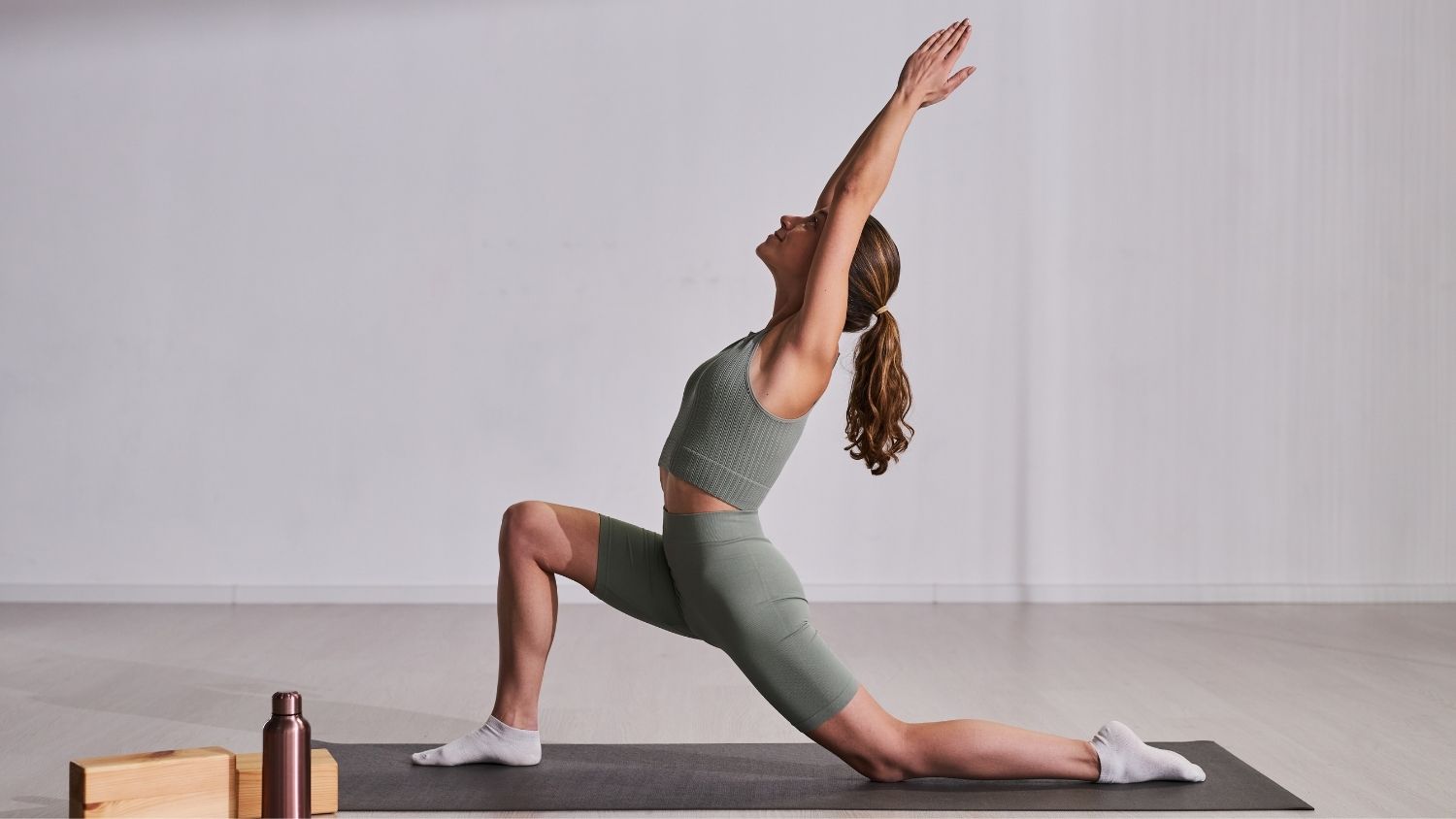
Last Updated on July 18, 2025
Ever feel like your body stiffens up the moment you sit down?
By noon, your back aches. Your hamstrings feel like bungee cords pulled too tight. And when you try to twist or bend—your body protests like it’s 90 years old.
You’re not the only one, and I’ve seen many during my wellness consultation.
A large percentage of adults report experiencing tightness, joint stiffness, or poor range of motion, largely due to inactivity and desk-heavy routines. But you don’t have to stay locked up in your own body.
Pilates for flexibility is more than gentle stretches—it’s a system that teaches your body how to move, adapt, and open up again.
Let’s look at how this practice transforms stuck, stiff bodies into ones that feel light, mobile, and free.
Why Flexibility Is More Than Just Stretching
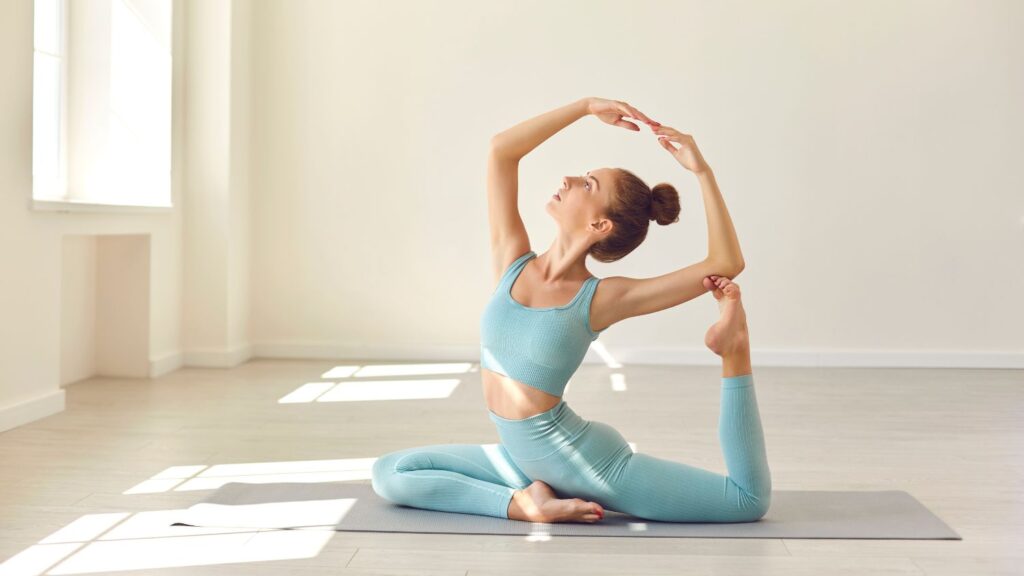
“Feeling tight isn’t just about muscles—it’s about how your whole system moves together.”
We often throw the word “flexibility” around like it’s a party trick. Touch your toes? Flexible. Do the splits? Super flexible.
But here’s what most people don’t realize: true flexibility isn’t about stretching muscles—it’s about your entire body’s ability to move freely, safely, and efficiently.
According to a research, flexibility includes not only muscle elasticity but joint mobility, nerve health, and fascial glide—all working in sync.
That tight hamstring? It might be coming from your hip alignment or spinal restrictions.
If you’ve ever thought,
“Why do I stretch and still feel tight?”
Here’s the truth: static stretching only lengthens muscle fibers temporarily.
What your body needs is dynamic, full-body activation—and that’s where Pilates becomes a game-changer.
It doesn’t isolate. It integrates.
With controlled movement, postural awareness, and deep core engagement, Pilates teaches your body how to coordinate flexibility with strength.
You’re not just lengthening—you’re retraining your nervous system to allow better, smarter movement.
Still tight after stretching? The problem isn’t your muscles—it’s your movement pattern.
How Pilates Unlocks Deep, Functional Flexibility
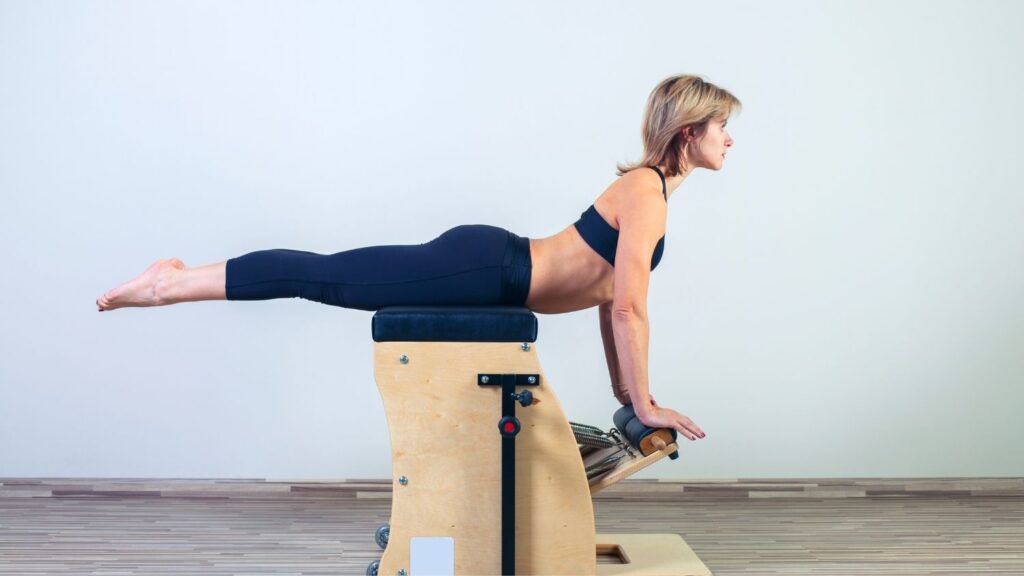
“It’s not about how far you stretch. It’s about how well you move.”
If you’ve tried stretching routines only to feel stiffer the next day, you’re not alone.
Most people focus on flexibility in isolation—hamstrings here, quads there. But what good is a loose hamstring if your hips or spine are locked up?
Pilates focuses on movement quality—not just stretch quantity.
It works on your functional movement, meaning how your body performs in real life—bending, reaching, twisting, standing, even breathing.
Every exercise in Pilates is rooted in controlled movement, core activation, and joint mobility. You engage muscles while lengthening them.
You move through patterns that retrain your neuromuscular system—your body’s GPS for flexibility and coordination.
Let’s make it clearer:
Ever noticed you feel looser after a Pilates session than after 20 minutes of stretching? Why? Because Pilates builds stability and mobility together. You’re teaching your body it’s safe to move more freely.
It also emphasizes the mind-body connection—so you’re not just going through the motions; you’re feeling them.
That awareness alone improves your flexibility over time because your body starts to trust itself again.
And the best part?
You don’t need to “be flexible” to start. You just need to be willing to move—with control, not force.
Don’t just stretch—move with meaning.
Top 5 Pilates For Flexibility Exercises You Can Do Anywhere
“You don’t need to fold like a pretzel. You need to move like a human.”
You don’t need a reformer, fancy mat, or ballet background to increase flexibility.
The beauty of Pilates is that it meets your body where it is—then gently guides it to where it should be.
Here are 5 expert-approved, mobility-enhancing Pilates moves that unlock real flexibility, safely and effectively.
1. Spine Stretch Forward
Targets: Spine, hamstrings, postural muscles, breath control
How to do it:
- Sit tall with legs extended, slightly wider than hip-width.
- Flex your feet, arms stretched forward, palms down.
- Inhale to lengthen the spine, exhale as you “peel” forward from the crown, vertebra by vertebra.
- Keep your core active and sit bones grounded.
Why it works:
This is more than a hamstring stretch—it mobilizes the spine, increases postural control, and builds deep core connection with your breath.
Pro Tip: Don’t reach with your arms. Initiate from your center. This isn’t about touching your toes—it’s about articulating your spine.
2. Single Leg Circles
Targets: Hips, pelvic stability, core control
How to do it:
- Lie on your back with one leg extended, the other straight up toward the ceiling.
- Anchor your arms and opposite leg to the mat.
- Circle the lifted leg across the body, down, and around—without rocking your pelvis.
- Reverse the circle. Repeat 5x each direction.
Why it works:
Improves hip joint mobility while training core stabilization. This combination is essential for long-lasting flexibility without instability.
Hook: If your hips are tight, your spine and knees are paying the price.
3. Saw
Targets: Spinal rotation, hamstrings, obliques
How to do it:
- Sit tall with legs extended wide, arms stretched side-to-side.
- Inhale, then twist from your ribs.
- Exhale and reach your front hand past your opposite foot like you’re sawing off your pinky toe.
- Roll back up and repeat on the other side.
Why it works:
It teaches your body to twist and flex simultaneously, unlocking spinal segments and releasing shoulder tension often mistaken for “tightness.”
Quick Question:
Why can’t you twist fully without forcing it?
Answer: Your spine lacks segmental mobility, and this fixes that—gently.
4. Bridge With Arm Reach
Targets: Hips, spine, shoulders, glutes, thoracic mobility
How to do it:
- Lie on your back, knees bent, feet hip-width apart.
- Press into your heels, engage glutes, and lift your hips into a bridge.
- At the top, extend one arm overhead while keeping hips level.
- Lower arm and hips back down. Repeat 5–6 times each side.
Why it works:
This move opens up the hip flexors while activating glutes and core. The arm reach adds thoracic spine mobility, making it a total body flexibility drill.
Pro Tip: Feel your ribcage expand as the arm moves. You’re not just lifting—you’re repatterning tight front-body chains caused by long hours of sitting.
Stiff hips? Tight shoulders? This move clears both.
5. Roll Down
Targets: Spinal articulation, deep core, hamstrings, nervous system release
How to do it:
- Stand tall with feet hip-width apart, arms by your sides.
- Inhale deeply. Exhale as you slowly roll down, starting from your chin, one vertebra at a time.
- Let your arms hang.
- Inhale at the bottom, exhale to roll back up with control.
Why it works:
This simple movement decompresses the spine, engages the deep core, and releases tight hamstrings and neck tension—all while calming the nervous system.
Quick Question:
Why do you feel a head rush when bending over?
Answer: Your nervous system and fascia are under tension. This move resets that system.
One move. One breath. Massive release.
The Science Behind Flexibility And The Pilates Approach
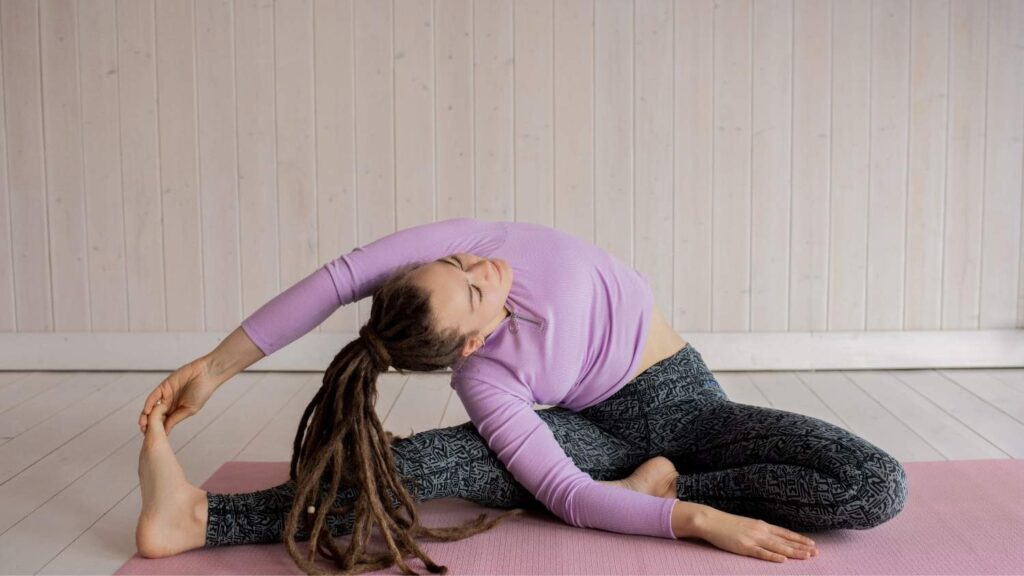
“Stretching only scratches the surface. Pilates changes how your brain lets your body move.”
Flexibility isn’t just a muscle matter. It’s a neuro-muscular conversation. What does that mean?
Your nervous system decides whether your body feels safe enough to stretch. If your brain senses instability, it will tighten everything—even when you’re not injured.
That’s why traditional stretching often fails.
Another research said that, dynamic, full-body movements like those in Pilates lead to a greater long-term increase in flexibility than static stretching alone.
Here’s why:
- Proprioception improves – Pilates refines your body’s awareness in space, which is essential for safe stretching.
- Neuromuscular re-education – You’re retraining the body to allow more range of motion while staying stable.
- Fascial release through breath and flow – Pilates movements help hydrate and unwind stuck fascia, the connective tissue that restricts motion.
- Core engagement rewires movement habits – When your center is strong, your limbs can move more freely.
And if you’ve ever felt like one side of your body is tighter than the other, that’s not your imagination.
Asymmetrical movement patterns create imbalances. Pilates addresses these by moving in all planes of motion—rotation, flexion, extension, and lateral movement.
The more your body trusts itself, the more it will let go.
Short Question:
Can tightness be psychological?
Answer: Yes. And Pilates works through the breath-body connection to relax both mind and muscles.
Flexibility Benefits Beyond The Mat
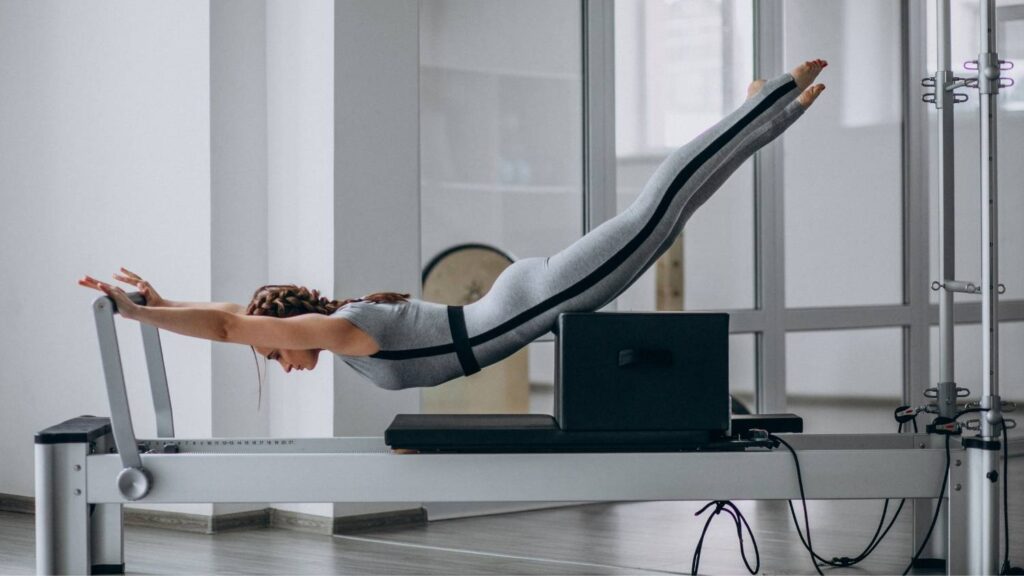
“It’s not just about how far you can stretch. It’s about how much better life feels when you can move.”
Most people chase flexibility so they can touch their toes or do a deeper lunge.
But the real benefits of flexibility show up in the way you live—not just the way you stretch.
Think about it:
- Can you reach the top shelf without straining your shoulder?
- Can you twist to grab something in the backseat without pulling a muscle?
- Can you squat down to tie your shoes or sit on the floor with your kids?
These aren’t “workout goals.” These are daily movement essentials.
And Pilates gives you that ease of motion by building functional flexibility—the kind that supports your mobility, postural strength, and balance and coordination.
Here’s what else flexibility improves when developed through Pilates:
- Joint lubrication and health
- Circulation and lymphatic drainage
- Reduced inflammation due to better tissue oxygenation
- Less likelihood of muscle spasms or tension headaches
- Improved sleep and energy levels due to less muscular compression
Quick Question:
Does tightness cause pain?
Answer: Absolutely. It compresses nerves, restricts blood flow, and forces your body into poor alignment.
Tips To Maintain Flexibility Daily (Even If You’re Desk-Bound)
“Flexibility fades fast—unless you build it into your life.”
You don’t need to live on a yoga mat to stay limber.
But you do need to give your body some intentional mobility time each day—especially if you sit for long hours, drive frequently, or spend time hunched over a screen.
Even a 10-minute flexibility check-in can prevent that familiar locked-up feeling.
Here are simple ways to stay flexible daily:
Stretch First, Sit Second:
Before logging into work, do 3 Pilates-based moves: roll down, bridge, and spine twist. It sets your spine up for a more mobile day.
Unclench Your Jaw + Breathe:
Tension in the jaw, neck, and diaphragm can restrict thoracic and spinal movement. Try 3 rounds of deep belly breaths every hour.
Stand and Sway:
Every 30 minutes, stand, circle your arms, sway side to side, and rotate your torso. You’re rehydrating fascia and moving stuck lymph.
Desk Modifications:
Use a lumbar support pillow, sit on a stability cushion, and keep your feet flat. Poor alignment = chronic tightness.
Evening Mobility Wind-Down:
Before bed, spend 5 minutes doing gentle roll downs, hip stretches, or thoracic twists. This resets your nervous system for sleep.
Hook: Your posture isn’t permanent—it’s just a habit. Pilates helps you rewrite it.
Pilates Vs. Yoga For Flexibility—What’s The Real Difference?

“Same goal. Different roadmap.”
Both yoga and Pilates are often celebrated for improving flexibility.
But they’re not interchangeable—and knowing the difference can help you choose what your body truly needs.
Yoga:
- Rooted in spiritual and philosophical traditions
- Emphasizes static holds, deep breathing, and passive stretching
- Improves flexibility mostly through passive lengthening
- Mindfulness is central, but core activation is optional
Pilates:
- Focused on biomechanics and functional movement
- Uses active, controlled movement to lengthen muscles while engaging the core
- Prioritizes spinal alignment, eccentric muscle use, and postural stability
- Breath is used more rhythmically to power movement
So, what’s better for flexibility?
It depends. But for those who:
- Sit most of the day
- Have postural imbalances
- Experience joint pain or low back tension
- Prefer core-focused movement
Pilates offers a smarter, more sustainable path to functional flexibility.
Short Question:
Can I do both?
Answer: Yes. But let Pilates be your base. Yoga can complement it—not replace it.
Don’t just stretch further—move better.
Final Thoughts
“Your body isn’t tight because it’s broken. It’s tight because it’s been trying to protect you.”
Let that sink in.
Most people think flexibility fades because of age or bad luck.
But the truth? It fades because we stop moving intentionally, stop listening to our bodies, and start pushing through tension instead of working with it.
Pilates gives you a way back.
- It’s not about doing the splits or folding into pretzel shapes—it’s about reclaiming the ability to move without restriction, pain, or hesitation.
- It’s about waking up in the morning and feeling free in your spine, hips, and shoulders—not stiff or compressed.
- It’s about building a body that supports you through workdays, workouts, parenting, aging, and everything in between.
You don’t have to live in a tight, limited body.
You just have to start moving with intention, reconnecting with your breath, and rebuilding flexibility from the inside out. That’s the power of Pilates.


